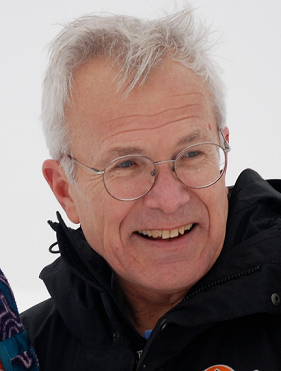AUTHOR PROFILE
Jim Haines grew up in Michigan. He was educated through 12th grade in Catholic schools. Before a law degree in 1975, Jim sacked groceries, caddied, worked in Michigan’s factories, parked cars, janitored for a beauty salon, waited tables, night clerked for a hotel, threw letters for the post office, shelved books in a library, assisted in a Montessori pre school, worked as a case worker for the Missouri State Training School for Boys, and did odd carpentry jobs. He practiced law for 10 years before eventually becoming CEO of El Paso Electric Company in 1996. In 2001 he was appointed the Skov Professor of Business Ethics at the University of Texas El Paso. In 2002, he became CEO of Westar Energy and then in 2007 was appointed the Clark Distinguished Professor of Business at Washburn University. He retired in 2009 so he could provide day care for his two and then three grandchildren while their parents attended graduate school.
In parallel, Jim was writing, woodworking, fishing, gardening, hiking and snow shoeing in the Rocky Mountains, running and cycling, and whitewater kayaking throughout Appalachia and the western states, as well as Central and South America, while also serving on numerous for profit and not for profit boards. Jim is married and has two sons and two stepdaughters. |
Why do you write?
Writing is integral to my sense of self. As a practicing lawyer, I was a prolific writer of petitions, appellate briefs, memoranda, etc. As a professor, I wrote lectures and articles for business journals. As a business executive, I wrote my own speeches, letters to shareholders, and other correspondence. I correspond regularly with friends through handwritten letters. For my entire adult life, I have written in some format virtually every day. Poetry has been the common denominator and the standard against which I measure, regardless of format. My aspiration is to think and write clearly, deal with substance, and offer a point of view.
What other creative activities are you involved in?
I always have a woodworking project underway and lately I’ve been learning to carve stone. I also repair oriental rugs.
Who is your favorite author and why?
I have read “Ulysses”, “The Love Song …”, “Dover Beach”, “The Second Coming”, “In Memory of W.B. Yeats”, and numerous of Dickinson’s and Frost’s poems more than any others. Along with a meditation on conscience of Saint Alphonsus Liguori, I have a copy of Richard Wilbur’s “Ecclesiastes II:I” taped to the windowpane above my desk. I admire Walter Bargen’s imagination, John Barr’s trenchant wit, Wendell Berry’s attention to place, Daniel Silva’s Gabriel Allon, Larry McMurtry’s storytelling, Atul Gawande on healthcare, Joseph Mitchell on NYC, Tillie Olsen’s empathy, and John McPhee’s curiosity. I could go on.
Tell us about the mechanics of how you write.
I need the first line. After that, while I usually have an end in mind, I remain open to a poem finding its end as well as its form. I compose at the keyboard, seldom from an outline or in a stream of consciousness process; sometimes I start with a prose version. I pay close attention to rhyme and meter but do not let either control. The real work is in cutting to the essence. That requires a judgment about what can be expected of the reader. A poem must feel right to the ear, so as I work through a poem, I constantly read it aloud. If it can’t be read, it won’t be read. It helps to have the comments of someone whom I trust.
Finally, what do you think about Carp, the fish, not our website?
Had you asked about nearly any other fresh water fish, I’d be able to offer something useful. While fishing for largemouth in farm ponds, I’ve watched the faint silhouettes of carp cruising just off the bottom or on a languid summer evening float along the surface like a log slowly drifting in the breeze. It’s the only fish I’ve tried to catch and never caught. I touched one once – its scales like chips of Isinglass; its thick puckered lips opening and closing – always ready; and somewhere in that Jabba the Hutt mass is a ganglion that defies my human brain.

